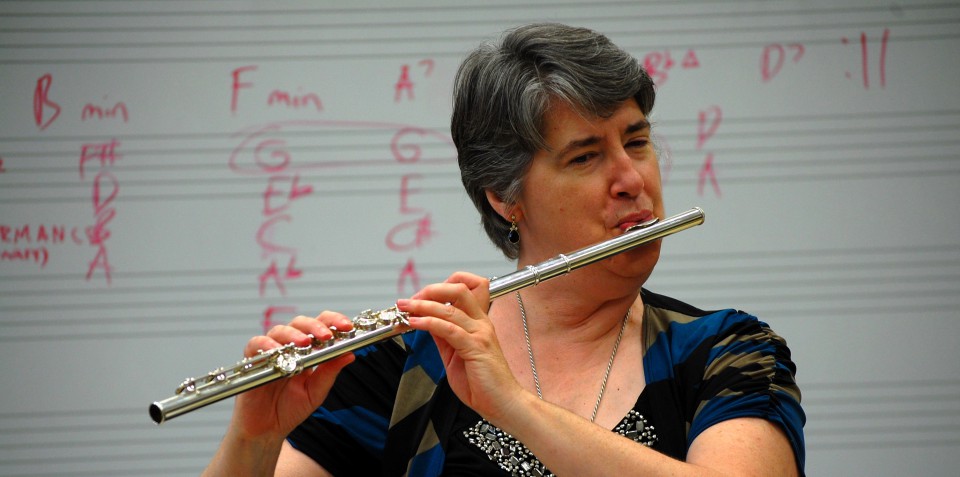 There are a number of seemingly insignificant habits your flute students can get into that make a bigger difference than you might imagine to intonation, tone quality and technique. Some of these are more visibly obvious than others. All of them can negatively impact your flute players, both individually and as a section. Keep an eye and ear out for these things in your flute students for a better sounding section.
There are a number of seemingly insignificant habits your flute students can get into that make a bigger difference than you might imagine to intonation, tone quality and technique. Some of these are more visibly obvious than others. All of them can negatively impact your flute players, both individually and as a section. Keep an eye and ear out for these things in your flute students for a better sounding section.
- Pressing the flute too hard against the chin – This makes a big difference. If you can’t move your bottom lip, you are pressing too hard. When the flute is resting on your lip, make sure you can move your lip to be able to say a “W”. If you can’t make the “W” shape, back off on the pressure against your lip. If you can’t move your bottom lip, controlling dynamics and play high notes will be too difficult.
- Flute too high on the chin – Affects both tone quality and pitch. Sound will be small and probably sharp. If you have to pull the headjoint out more than 5/8″ (1 cm), the flute is probably too high on the bottom lip.
- Covering too much of the blow hole – There shouldn’t be any more than a 1/3 of the hole covered by the bottom lip. Any more than that and the tone will be dull and likely flat
- Angle of the lower end of the flute in relation to your head – This means that you get the best sound from your instrument when you can see the lower end of the instrument in your peripheral vision. If you have the end of the flute in line with your right ear, you won’t be able to get maximum resonance from your instrument
- Balance of the flute in your hands – Position the headjoint on the body so the weight of the rods is more on top. That way your fingers are free to move and you won’t be having to “hold” the flute to prevent it from rotating backwards.
- Resting right knuckles against the rods – Just bad for the flute and for technique. Bad for the flute because sweat and body oils can work into the mechanism causing binding and even rust. Bad for technique because you can move your fingers much more quickly from the joints at the base of the fingers than from the second joints.
- Thumb position on right hand – For best technique and hand position, thumb should be under and behind the flute, more or less under the F key. Thumb should never be in front of the flute (check the headjoint alignment and balance) or up under the F# or G key.
- Thumb position on left hand – For best technique, left thumb should be open in relation to the rest of the hand, straight and relaxed. Let the thumb fall on the key wherever. This can be anywhere from the thumb knuckle to the the tip, depending on size and length of the thumb. Top joint should not be bent. The Bb key arm is intentionally recessed around the B key on flutes to accommodate different size and shape thumbs.
As always, if you find these entries useful, please subscribe, share with your colleagues and come back regularly. Feel free to comment. If you have a topic you would like to see explored more fully, you can contact me via IM/Messenger on Facebook or email me at dr_cate@sbcglobal.net. For information about clinics, workshops and performances, click here.

Pingback: Favorite blog posts, May 2017 | Bret Pimentel, woodwinds
Pingback: Never Mind About Support | Dr. Cate's Flute Tips
Pingback: The Secret of Tuning Up Db (C#) | Dr. Cate's Flute Tips
I have not been playing flute long (about 10 days) have been having embouchure issues until today, before I read your vlog I moved the instrument to a 45° angle which is similar to the advice you give in your vlog and what a difference it has made to the sound I get! I am very happy because I get a richer sound, it resonates and sounds different and I have stopped exhausting myself by blowing over the tone hole!
LikeLike
So glad my suggestion is working for you! Have fun playing flute
LikeLike